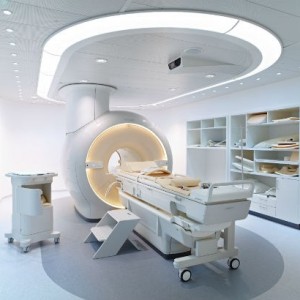 According to a study recently published in the Journal of Clinical Oncology, extremity soft tissue sarcoma (STS) treated with preoperative image-guided radiation therapy (IGRT) to a reduced target volume reduces long term side effects without affecting survival rates.
According to a study recently published in the Journal of Clinical Oncology, extremity soft tissue sarcoma (STS) treated with preoperative image-guided radiation therapy (IGRT) to a reduced target volume reduces long term side effects without affecting survival rates.
“This study proves that we are able to use this modern technology — image-guided radiotherapy — to irradiate smaller target volumes (less normal tissue included) and reduce long term side effects in extremity sarcoma patients compared with conventional radiotherapy,” said Dr. Dian Wang, lead author of the paper and a professor of Radiation Oncology at Rush University Medical Center in a recent news release.
In the study titled “Significant Reduction of Late Toxicities in Patients With Extremity Sarcoma Treated With Image-Guided Radiation Therapy to a Reduced Target Volume: Results of Radiation Therapy Oncology Group RTOG-0630 Trial,” researchers from the Rush University Medical Center conducted a prospective phase II trial to evaluate late toxicities in 98 patients with extremity soft tissue sarcoma (STS) treated with preoperative image-guided radiation therapy (IGRT) to a reduced target volume.
Patients’ extremity STS received IGRT with (cohort A, n=12) or without (cohort B, n=86) chemotherapy and then limb-sparing resection. Daily pre-treatment images were digitally integrated with previous scans to determine a custom tailored radiation dose that minimized exposure to adjacent normal tissue. All patients received IGRT to reduced tumor volumes according to strict protocol guidelines. Late toxicities were assessed at 2 years.
After 2 years, the researchers observed a reduction of late toxicities in patients with extremity STS who were treated with preoperative IGRT and absence of marginal-field recurrences.
“This is one of few successful multi-institutional studies on localized sarcoma in almost a decade,” Dr. Wang said. “It should provide oncologists with validation and evidence of this new radiotherapy approach that takes full advantage of rapidly developing technologies. The absence of marginal-field recurrence and favorable toxicity profiles suggest that parameters used in this study are appropriate for preoperative image-guided radiotherapy of extremity sarcoma.”
[adrotate group=”1″]
“Although radiation oncology is a technologically intense discipline, knowledge in how to use these technologies is essential for optimal outcomes. Dr. Wang and his collaborators in the Sarcoma Working Group of the NRG co-operative oncology group are to be lauded for improving the use of these technologies in a way that makes the limb preservation care of patients with sarcoma less toxic without compromising efficacy,” said Dr. Ross Abrams, Chairman of Rush’s Radiation Oncology Department. “While these results will need to be confirmed by other groups, I am excited that one of my colleagues and faculty at Rush was a leader in this effort.”
“These positive results are an excellent example of the important multi-institutional research carried out by the research groups that comprise the NCI Clinical Trials Network. No other research enterprise is likely to investigate strategies to reduce treatment-related toxicities for patients with these rare tumors,” said Dr. Walter J. Curran, Jr., an NRG Oncology Group Chairman and Executive Director of the Winship Cancer Institute of Emory University in Atlanta in the news release.


